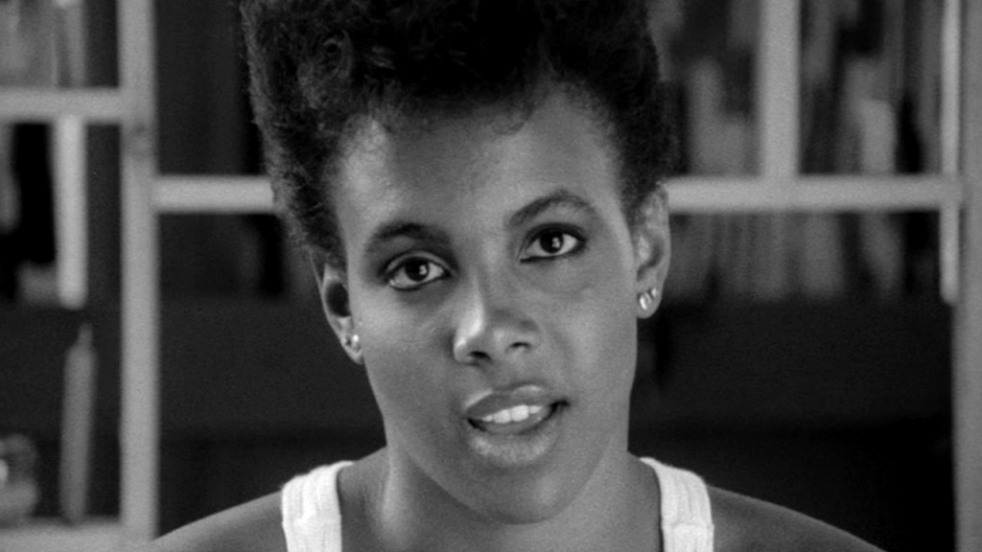Last week, the Technique examined the 1992 horror film “Candyman,” which used an urban legend to allegorically depict racial inequities in Chicago. The next pick is not quite as laced with symbolism, but it is every bit as interesting to dissect.
One of the great filmmakers of the last few decades, Spike Lee is most commonly known for exploring American conceptions of race in movies such as “Do the Right Thing” and “Malcolm X.” Prior to those works, his debut feature launched his career via its take on an independent young woman. The 1986 comedy “She’s Gotta Have It” details the three romances of Nola Darling — a carefree African American woman who refuses to be tied to any one man.
Crucial to the very essence of this movie is the remarkable central performance from Tracy Camilla Johns (“New Jack City”), who stars as Nola. Had it come out today, she might have quickly ascended into stardom, as opposed to the sparse filmography that she has to date. Nonetheless, her charm and wit take a role — one that could have been vilified in other hands — and supply that character with life, vibrance and total self-assurance.
An opening quote from Zora Neale Hurston’s writings sets the tone from the start. For men, romances are alike watching ships, hoping one might come to shore. Women, on the other hand, “forget all those things they don’t want to remember and remember everything they don’t want to forget.” This suggests that the central woman of “She’s Gotta Have It” follows her own whims and fancies, unguided by anything other than wants.
Facing the camera, Nola then tells the viewers that she only wants to clear her name, although she is unashamed of herself, suggesting that she does not believe in monogamy and that the men in her life knew “the deal.” The movie then cuts to the first of her lovers, Jamie Overstreet (Tommy Redmond Hicks, “The Meteor Man”), who refers to Nola as his soulmate. These opening moments call to mind similar romantic comedies like “Annie Hall” or “500 Days of Summer.” However, “She’s Gotta Have It” is quick to differentiate itself by placing the woman’s wants front and center.
Nola has two other suitors as well. Greer Childs (John Canada Terrell, “Def by Temptation”) is an attractive but self-absorbed model; Mars Blackmon (Spike Lee) is an unambitious but quippy ball of energy. Put aside the hopeless romantic Jamie, and the three pose as starkly different representations of men catching Nola’s eyes.
A male archetype, Greer obsesses over his own looks, physique and presentation. He brags constantly and seems to view Nola more as a trophy than a person. Although she certainly is attracted to his confidence, the woman frequently dismays at his self-obsession, sometimes mocking him. In one comedic sequence, she slowly loses interest when it takes him forever to get prepared for bed.
Everyone knows Mars Blackmon. He certainly leans on overly gendered notions in a lot of his behaviors and opinions. However, Mars’s irresistible charm constantly makes Nola smile and laugh, something that separates him from the others.
Jamie might be the most classically appealing, at least in a conservative sense. The man is well-dressed, even-tempered and courteous. But his civil mannerisms sometimes make him a boring suitor for Nola — an exuberant woman. Even worse, his “nice guy” characteristics belie his possessive attitudes and violent tendencies, as made apparent when he rapes Nola near the end of the film.
Through these men’s efforts and expressions, “She’s Gotta Have It” forms a rounded conception of courtship as seen through their eyes. This is augmented by a sequence of hilarious male pickup lines. To them, women are objects to catch and obtain. For romantics like Jamie, companions offer a dream-like euphoria, depicted remarkably in a dance sequence — the movie’s only scene in color.
Where one might feel sorry for them in a way, one thing is clear: Nola does not believe in monogamy. She told the viewers and the men from the beginning, and she never snuck around or hid anything. Some of the filmmaking choices also coincide nicely with the literal text of the movie.
“She’s Gotta Have It” is shot beautifully in black and white, 16-mm film. The color choice mirrors the facts as Nola sees them: as clear as black and white. Ernest Dickerson’s (“Do the Right Thing”) camera constantly gazes at Nola but is less adoring of her male counterparts.
Similarly, the movie has a charming jazz score, provided by Spike’s father, Bill Lee (“Jungle Fever”). The genre’s free-flowing liveliness and spontaneity match Nola’s personality.
The film’s ending has significance, too. After breaking things off with Mars and Greer, she returns to Jamie to try to make it work while she takes a break of celibacy. Always the fool, Jamie accepts her back.
Abruptly, it cuts back to Nola. She tells the camera that the celibacy did not last, and neither did her romance with Jamie. Crucially, she adds, “It’s about control — my body, my mind. Who is gonna own it, them or me? I am not a one-man woman.” As she proudly proclaims this, it is hard not to smile and admire her steadfast convictions and self-assurance.
Incessantly charming, Lee’s “She’s Gotta Have It” triumphantly champions a woman who lives the life she wants — not the one society says she should.
Next week, the Technique will take a look at Ana Lily Ampour’s 2014 horror movie “A Girl Walks Home Alone at Night,” which is an aptly titled vampire western. The Persian-language film is streaming for free on Kanopy, Hoopla and Shudder. Students can make a free Kanopy account on their website by either linking their Tech info or a public library card. The movie is also available for rental on YouTube, Google Play, Vudu and Apple.
